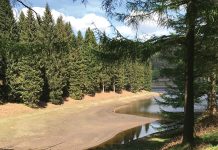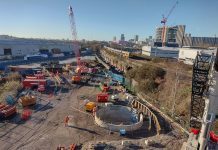Scott Wilson, with it’s wealth of wastewater experience, assists Northern Ireland Water fulfil environmental obligations by providing solutions for sensitive projects along the North Coast.
The North Coast in Northern Ireland is a designated Area of Outstanding Natural Beauty and is recognised as a premier tourist location, attracting thousands of visitors yearly to locations such as the world famous Giant’s Causeway. Previously, wastewater treatment for the coastal towns of Castlerock, Portrush and Portstewart involved only preliminary treatment and discharge to the sea through short sea outfalls, while in Coleraine and Articlave, treated effluent was discharged to the tidal stretch of the River Bann. The area includes four of Northern Ireland’s most popular beaches and experiences significant population increases during the summer months.
The Project
At a cost of £45m and spanning 16km along the coast, this contract was the most complex EU Urban Wastewater Treatment and EU Bathing Waters Directives compliance scheme to be undertaken by Northern Ireland Water. Construction of the North Coast Scheme got underway in 2005, although Scott Wilson has been involved with the scheme long term with the design team devising the “skeleton” of the now completed scheme, some 15 years earlier. This earlier strategic work included identification of sites for the treatment works, pumping stations, long sea outfall and the pipeline linkages between these elements. The project also needed to accommodate future growth in terms of residential, commercial, tourism and industrial development to the year 2030.
WWTW Design
The demands placed on the new sewerage system fluctuate seasonally due to tourism. Within the design of the new wastewater treatment works, measures were taken to ensure effective removal of possible fats, oils and greases (F.O.G.) that could enter the sewerage system from increased restaurant business during peak tourist seasons. As a result, systems such as a dedicated F.O.G. removal system and a fully-automated hot and cold wash system for the inlet screens were incorporated into the design. The state-of-the-art treatment works can treat up to 54 megalitres of wastewater a day.
Sympathetic Design – Pumping Stations & Pipelines
The 16 pumping stations contained within the scheme have been designed as a “cascade” system, where the smallest pumping stations pump to terminal pumping stations in each town which in turn transfer flows to the WWTW. The main pumping stations are situated at prominent locations along the coast or within town centre locations. For this reason, Scott Wilson developed aesthetically pleasing solutions which integrate effortlessly with their surroundings and add amenity benefit to the area –
- Dhu Varren Pumping Station incorporates much-needed public conveniences with baby and water sports changing facilities
- Causeway Street Pumping Station is largely buried and creatively landscaped to provide an attractive area
- The new roof of Lansdowne pumping station forms a public viewing platform towards the coast.
To promote sustainable construction, many of the pumping stations were constructed using pre-cast concrete segmental shafts, promoting an environmentally-friendlier means of building, minimising the number of construction vehicles and the amount of spoil removed from site. Trenchless technology was utilised where possible during the installation of the 25km of pipeline, reducing the environmental impact and minimising disruption to traders and road users; techniques involved sliplining, microtunnelling, pipejack and auger bore.
The installation of the 1,200m outfall pipe, using two off-shore rigs, was carried out by a specialist marine company. The route of the outfall was carefully selected following consultation with statutory bodies to ensure no impact on any significant, rare or inter-tidal plant, marine life and animal communities. The complexities surrounding the award winning North Coast Wastewater Scheme meant that meticulous planning and preparation was required, which resulted in the scheme going into operation in 2007, ahead of the main bathing season. Now with a truly modern sewage collection and treatment system, the North Coast area can enjoy the benefits of higher quality bathing waters for many years to come.





